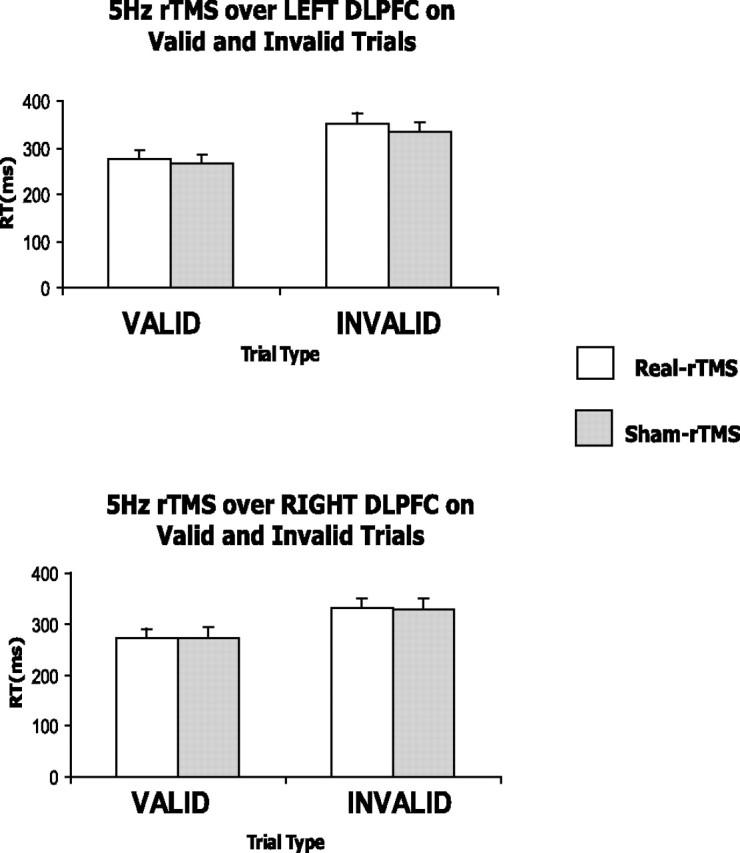Figure 5.

fMRI study. behavioral effects of cue type and conditioning of DLPFC on RTs. The 5 Hz rTMS conditioning did not lead to any significant changes in RTs in either valid or invalid trials whether applied over the left or right DLPFC. However, a significant main effect of cue revealed slower RTs in invalidly cued trials (352 ± 12 ms) than in validly cued trials (267 ± 7 ms) when pooled across all levels of stimulation type, stimulation site, and hand response.
